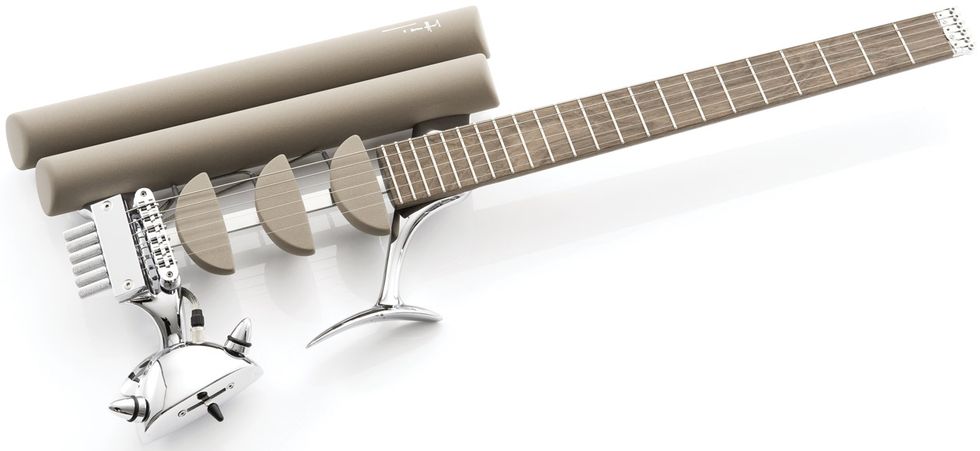Whether you’re a guitar player or a guitar builder, you’ve probably been through a lot of changes along the way. For musicians, this usually means learning covers of songs that you like, which in turn leads to joining or forming a band. Some of us even started out trying to invent our own songs along with playing covers. Performing in a cover band is a rite of passage that involves learning the riffs and changes of a lot of diverse material. That’s useful for expanding your understanding of song structure and how popular songs are built. It’s a bit like reverse engineering. And if you get good enough, you might get some gigs playing in bars or at shows.
Builders start the same way. I was fascinated with Rickenbacker guitars early on, so when I met a schoolmate who had one that wasn’t operating properly, I told him I could fix it for him. It wasn’t exactly a lie. How could a guitar be harder to repair than my bicycle? The desire to get under the hood and see how the thing worked was intoxicating. I just wanted to hold it.
As I recall, it was a bridge-mounting/bridge-height problem exacerbated by a severely bowed neck. I approached the problem the same way I had learned to play guitar, which is to say I noodled around with it until it started to sound like something decent. I made mental notes along the way about the relationship between the bridge, frets, and truss-rod adjustments. Luckily, I had a knack for geometry, which is much of what guitar building (and repair) is about. With the experience stashed in the back of my head, I reluctantly returned the guitar to my grateful friend. He thought I was doing him a favor! At the time, it didn’t seem like much, but in hindsight it was actually the first step on the path I’ve been on for a long time.
For a cover band, the top of the heap is playing weddings. The trick here is that people want to hear things they are familiar with. The closer your version of “Don’t Stop Believin’” is to the original, the happier the couple is going to be. Now, some of the best practitioners of this craft manage to weave in some original flourishes along the way.
This helps set them apart without confusing the crowd, and it makes the band happy, too. And it goes double for tribute bands, whose shtick is dressing up in authentic costumes, too. I have yet to attend a wedding that featured a full-on tribute band, but I suppose a Metallica-themed reception has likely happened.
The guitar-making equivalent to all this is building clones. Whether you are assembling a Tele or Strat variant, it’s always best to keep things close to the original. You can put a little spin on things to make it your own, as long as you don’t stray too far from the basic structure. The interesting thing here is that clone guitars have been around so long that form itself is regarded as the archetype. I have heard people refer to a real Jazzmaster as though it was simply Fender’s version of the model. My building career started in the 1970s with Flying V and Explorer shapes—designs that had largely been abandoned at the time. Today, I wonder how many guitarists realize that any V-shaped guitar is actually a copy of a Gibson?
My preference in things for both music and guitars is a tasteful blend of the familiar and the eccentric. I love it when a band references the music they admire without ripping artists off note-for-note. The great bands wear their influences on their sleeves, but without sounding like they are copying anything exactly. The same goes for guitar building. The world might not need another exact Les Paul clone—no matter how well built it is. At the same time, to build a Floyd Rose-equipped electric banjo with an inverted Explorer headstock just because it hasn’t been done may be pure folly. Still, there are exceptions to the rule, or as a good friend of mine once said, “there’s an ass for every saddle.”
My favorite new builders have a demonstrable grasp of visual balance and composition, as well as an understanding of what components compliment each other sonically.
We all grow up deconstructing the things we like. You learn the rules before you break them with purpose. If you want an example, check out Ulrich Teuffel’s Birdfish guitar, in this column’s photo. Our first steps are to imitate, and hopefully we move on. As always, in art and commerce there’s a fine line between emulation and appropriation. Seeing a cover band might make for a fun night in a bar, but nobody is going to play their album at home.


















